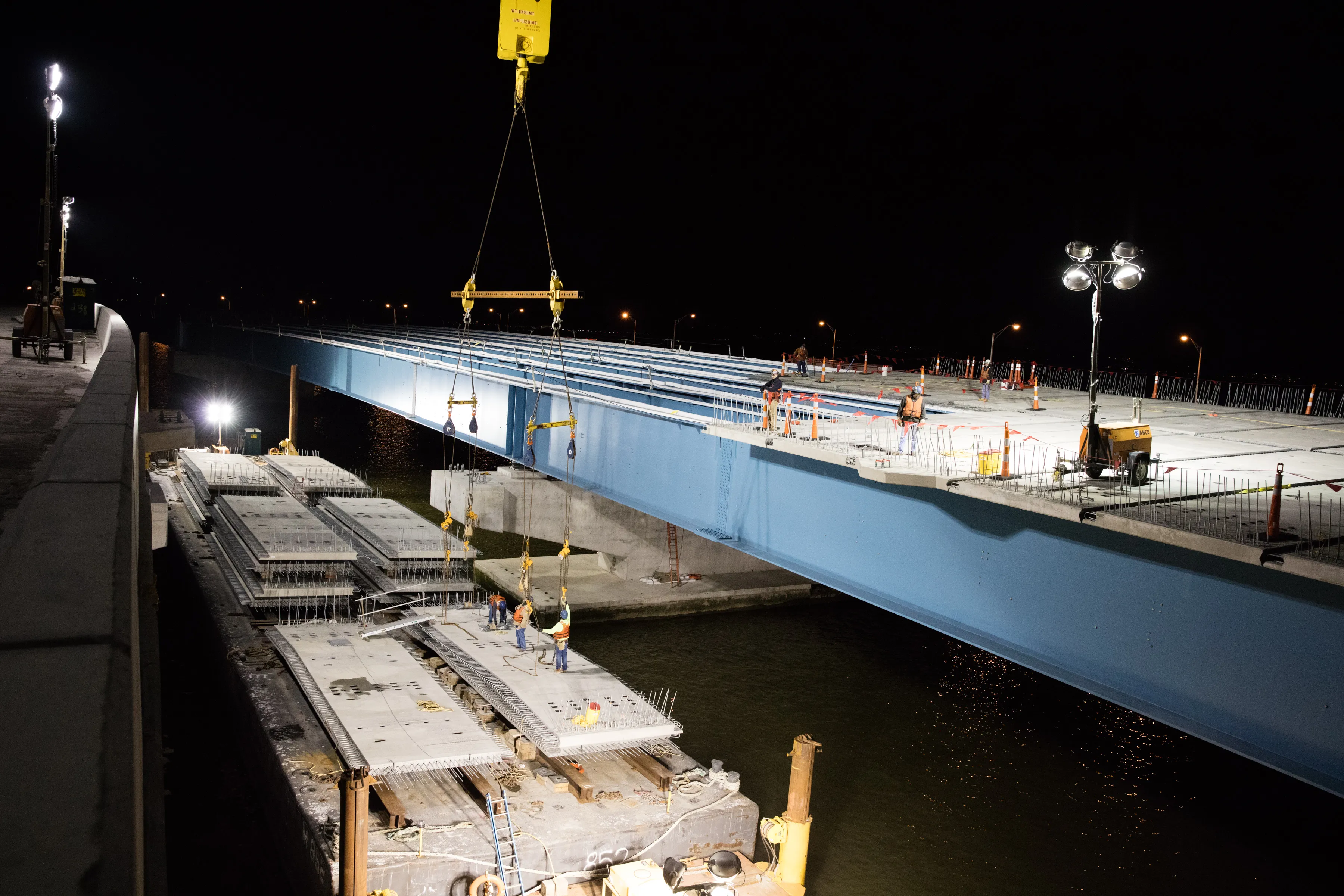
According to ARTBA’s report, 47,052 US bridges are in poor condition, while 18,842 Interstate highway bridges have identifiable repair needs. The length of America’s structurally deficient bridges if placed end-to-end would span nearly 1,760km, ARTBA’s examination of federal government data shows.
The Brooklyn (NY), Arlington Memorial (Washington, DC-VA), Pensacola (FL), San Mateo-Hayward (CA) and Vicksburg (MS) bridges are among notables on the list. The average age of a structurally deficient bridge is 62 years, compared to 40 years for non-deficient bridges.
Including structurally deficient bridges, nearly 235,000 of US bridges (about 38%) are in need of some sort of structural repair, rehabilitation or replacement, according to ARTBA. The association estimates the cost to make necessary repairs is nearly $171 billion.
States with the most structurally deficient bridges are: Iowa (4,675 bridges); Pennsylvania (3,770); Oklahoma (2,540); Illinois (2,273); Missouri (2,116); North Carolina (1,871); California (1,812); New York (1,757); Louisiana (1,678); and Mississippi (1,603).
Those with the most structurally deficient bridges as a percentage of their total bridge inventory are: Rhode Island (23%); West Virginia (19.8%); Iowa (19.3%); South Dakota (16.7%); Pennsylvania (16.5%); Maine (13.1%); Louisiana (13%); Puerto Rico (11.7%); Oklahoma (10.9%); and North Dakota (10.7%).
The analysis of the recently-released US Department of Transportation 2018 National Bridge Inventory (NBI) database reveals vehicles cross these compromised structures 178 million times/day. Nearly 1,775 are on the Interstate Highway System. The most travelled structurally deficient bridges are on parts of Route 101, Interstate 405 and Interstate 5 in California, where daily crossings are as high as 289,000/day.
However, repairs are only being carried out slowly. Bridges with structural deficiencies dropped by just 1% in 2018. And with the US Government focusing on other matters, it does not look as if the problems with US bridges will improve any time soon.
Transport infrastructure is vital to the economy of any nation and maintaining and improving this should be a priority for any government. The I-35W bridge disaster in Minneapolis happened over a decade ago but insufficient measures are being taken to ensure that this could never happen again. For a wealthy nation such as the US to so neglect its bridge infrastructure is shameful. However, many other western nations also have little be proud of with regard to safety, with the fatal collapse in 2018 of a high bridge in Genoa, Italy, being the most shocking example.






